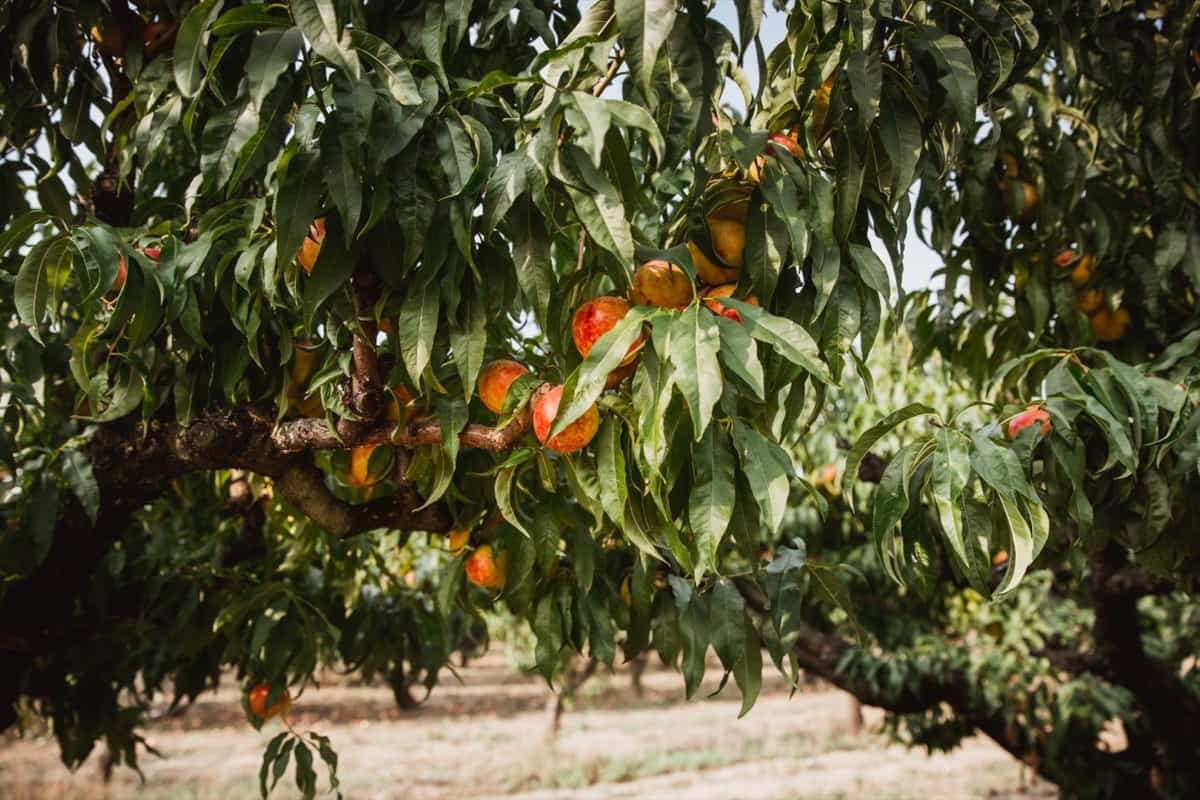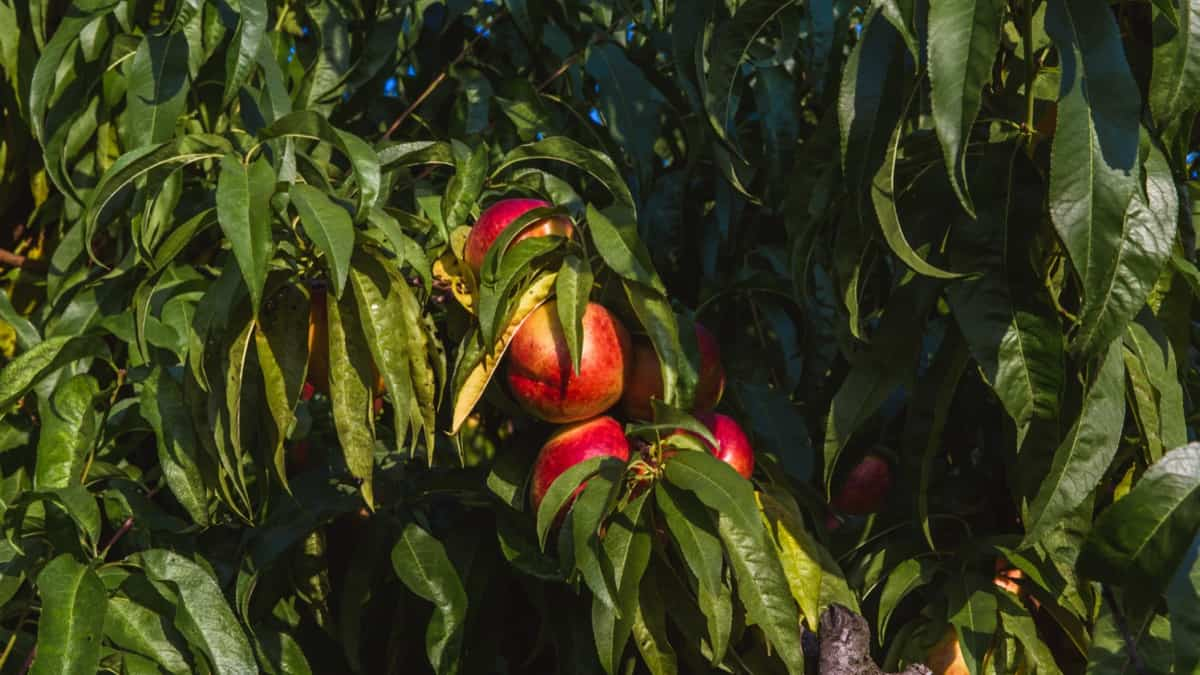A nectarine tree is a beautiful addition to any garden or orchard. However, sometimes these trees can become sick and die. There are several reasons why a nectarine tree may die, but fortunately, most of these causes can be fixed. This article explains some common causes of dying nectarine trees and how to fix them.

9 Causes of Dying Nectarine Trees
Why is My Nectarine Tree Dying in Summer Heat, and How Can I Save It?
When temperatures rise above 32°C, the tree can suffer. The summer heat causes the tree to lose moisture through evaporation faster than it can absorb water from the soil. As a result, the tree becomes dehydrated and stressed. If the soil cannot retain water well, the tree will struggle to get the moisture it needs to survive. This is especially true in areas with sandy soil or soil that have been heavily disturbed.
- To save a nectarine tree that is dying due to lack of water, it is important to water it deeply and consistently.
- It is important to improve the soil quality to save a nectarine tree that is dying due to poor soil conditions. This may include adding compost or fertilizer, aerating the soil, or transplanting the tree to a more suitable location.
Preventing Nectarine Tree Death From Fungal Infections: Effective Remedies and Prevention Tips
- Brown rot: It causes fruit rot as well as twigs and branch cankers. Brown rot can be treated with fungicides such as captan, thiophanate-methyl, and myclobutanil.
- Blossom blight: It can cause flowers to wilt and die. Blossom blight can be treated with fungicides such as captan, thiophanate-methyl, and myclobutanil.
- Powdery mildew: It can cause a white powdery coating to appear on leaves and fruit. It can be treated with fungicides such as sulfur, potassium bicarbonate, and myclobutanil.
Identifying Nutrient Deficiencies in Nectarine Trees and Remedies to Revive Them
- A nitrogen deficiency in nectarine trees can result in stunted growth, yellowing of leaves, and reduced fruit production. To fix this deficiency, fertilizers include ammonium sulfate, urea, and blood meal.
- Phosphorus deficiency can cause stunted growth, reddish-purple leaves, and reduced fruit production. To fix this deficiency, fertilizers include bone meal, rock phosphate, and superphosphate.
- Potassium deficiency can cause yellowing leaves, weak branches, and reduced fruit production. To fix this deficiency, you can use fertilizers, including potassium chloride, potassium sulfate, and potassium nitrate.
- Calcium deficiency can cause distorted fruit, stunted growth, and yellowing leaves. You can use gypsum, limestone, and calcium nitrate fertilizers to fix this deficiency.
How to Protect Nectarine Trees From Pests and Diseases to Prevent Decline and Death
Identify the most common pests and diseases that can affect them. The most common pests include aphids, mites, and fruit flies. Diseases affecting nectarine trees include brown rot, leaf curl, and bacterial spot. By identifying these pests and diseases early on, you can take steps to prevent them from causing significant damage.
In case you missed it: 9 Causes of Dying Pecan Trees and How to Fix Them?

- Some of the most effective chemical controls for nectarine tree pests and diseases include carbaryl, malathion, and copper fungicide.
- There are many natural ways to deter pests from your nectarine tree. Apply neem oil, insecticidal soap, or garlic spray to keep pests at bay.
Overwatering Issues in Nectarine Trees: Signs, Symptoms, and Steps to Rescue a Dying Tree
When a nectarine tree is overwatered, the soil becomes waterlogged, and the tree roots can begin to suffocate. This can cause stunted growth, yellowing leaves, and, in severe cases, death. When the soil is consistently moist, it creates an ideal environment for fungal spores to grow and spread. This can result in various problems, including leaf spots, powdery mildew, and fruit rot.
- Stick your finger into the soil about 2-3 inches deep. If the soil is dry, it’s time to water. If the soil is moist, wait a few more days before watering.
- Instead of using a sprinkler, which can lead to overwatering and water waste, use a soaker hose or drip irrigation system. These methods deliver water directly to the roots, where it’s needed most.
- Use a 2-3 inch layer of mulch with organic materials like wood chips or leaves, and keep the mulch a few inches away from the tree trunk.
Underwatering Issues in Nectarine Trees: Signs, Symptoms, and Steps to Rescue a Dying Tree
- Symptoms of underwatering in nectarine trees are wilting, yellowing, and crispy leaves.
- To save the underwatered tree, water the tree deeply. This means giving the tree enough water to saturate the soil and reach the tree’s roots. Depending on the size of the tree, you may need to water it for several minutes to achieve this.
- Check the soil moisture around the tree regularly to determine when the tree needs to be watered.
- Apply a layer of mulch, such as wood chips or shredded leaves, around the tree’s base, keeping the mulch a few inches away from the tree’s trunk.
Nectarine Tree Winter Damage/dying: Protecting Trees From Frost and Cold Temperatures
Winter damage in nectarine trees can take various forms, including twig dieback, crown rot, and bark splitting. Twig dieback occurs when the tips of the branches die and turn brown or black. Crown rot is a fungus-caused disease that affects the tree base, causing it to rot. Bark splitting occurs when the bark on the trunk or branches cracks open due to cold temperatures. To protect nectarine trees from frost damage, the following steps can be taken:
- Prune the tree before winter to remove any dead or damaged branches. This will help to prevent twig dieback.
- Apply a layer of mulch around the tree’s base to insulate the roots and prevent crown rot.
- Wrap the tree trunk with burlap or similar material to prevent bark splitting.
- Cover the nectarine tree with a frost blanket or other protective cover when frost is expected. This will help to keep the tree warm and prevent damage from frost.
Improper Pruning May Cause Nectarine Tree Death: Pruning Methods for Healthy Growth
- One of the main causes of improper pruning is over-pruning. Without enough leaves and branches, the tree will be unable to produce enough energy through photosynthesis, leading to weakened growth and eventual death.
- Pruning during periods of extreme weather, such as during a heatwave or cold snap, can further stress the tree and lead to its death.
- To save a nectarine tree that has been improperly pruned, it is important to identify the problem early and take action. One way to save the tree is to remove any damaged or diseased branches, cutting them back to healthy wood.
In case you missed it: 9 Causes of Dying Kumquat Trees and How to Fix Them?

Reviving a Stressed Nectarine Tree: Rehabilitation Methods for Overall Recovery
- Common causes of stress include pests, diseases, lack of water or nutrients, and harsh environmental conditions. Once the cause is identified, steps can be taken to address it.
- If the cause of stress is pests or diseases, treating the tree with the appropriate pesticide or fungicide is important.
- Regular watering, fertilization, and pruning can help keep the tree healthy and reduce the likelihood of future stress.
- If the cause of stress is a lack of water or nutrients, the tree should be watered deeply and fertilized with a balanced fertilizer. In addition, adding organic matter such as compost or aged manure around the tree’s base can help improve soil health and nutrient availability.
Conclusion
In conclusion, there are several causes of dying nectarine trees, but most of these causes can be fixed. By ensuring that the tree receives enough water, the soil quality is appropriate, pests and diseases are treated, and the tree is pruned correctly, you can help your nectarine tree thrive and produce delicious fruit for years.
- Feed Your Flock for Less: Top 10 Tips to Save on Chicken Feed
- Ultimate Guide to Ossabaw Island Hog: Breeding, Raising, Diet, and Care
- Hatching Answers: The Top 10 Reasons Your Chickens Aren’t Laying Eggs
- Eggs and Economics: Breaking Down the Cost of Raising Backyard Chickens
- Defend Your Greens: Proven Methods to Keep Iguanas Out of Your Garden
- Ultimate Guide to Cinnamon Queen Chicken: A Comprehensive Guide for Beginners
- Ultimate Guide to California Tan Chicken: Breeding, Raising, Diet, Egg-Production and Care
- Ultimate Guide to Marsh Daisy Chicken: Breeding, Raising, Diet, and Care
- 10 Types of Chicken Farming Businesses You Can Start for Profits